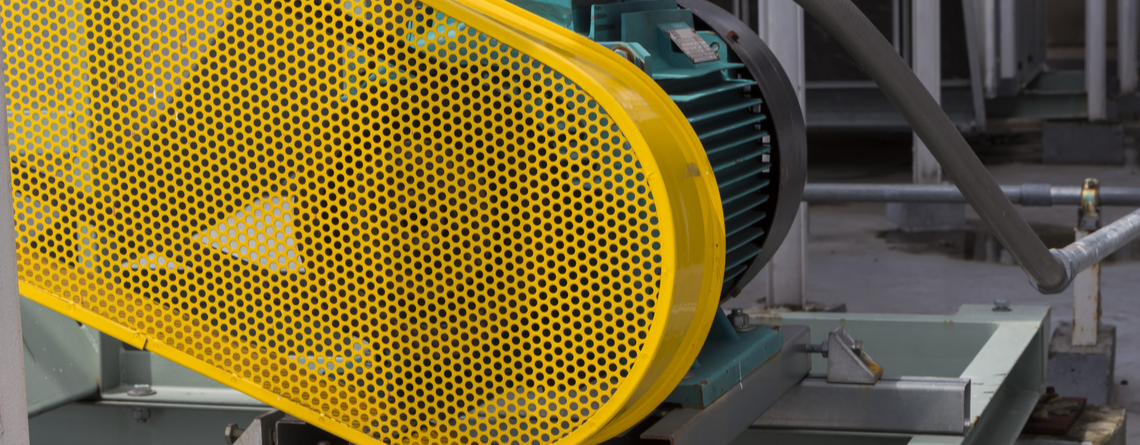Automation, safeguarding, and machine safety in the workplace
April’s 12 Months of Safety topic is safeguarding and machine safety. We had the opportunity to chat with João Paulo Vaz – Machinery Safety Consultant & CMSE® Training Advisor at Pilz Automation Safety Canada L.P., on this critical safety topic.
Safety requires competence and attitude. Both can be developed. ` João Paulo Vaz
How did you get into this business?
I started working in industrial automation as an electronics technician, providing support to customers in applying products back in 2003. In 2012, I graduated as Electrical Engineer and Pilz Brazil invited me to work as a Machinery Safety Consultant. In 2013, I was promoted to Team Leader for Training and Standards. In 2018, I got my post-graduate degree in Occupational Health and Safety Engineering in Brazil. In September of the same year, I started working for Pilz Canada as Machinery Safety Consultant and Training Advisor.
How is the rise in automation impacting worker safety in manufacturing?
The rise in automation is not a problem, is a solution. What really impacts worker safety is the lack of competence in the field of machinery and workplace safety. A ‘competent person’ is defined, in general terms, as someone having the knowledge, training and experience to assess and reduce the risks to health and safety in the workplace. A competent person knows that good machinery design is that one which requires fewer human interventions. The less interaction between workers and machine, the less likely it is to happen a hazardous event. The more automated tasks are, the safer manufacturing is.
What are some of the critical factors you look at when assessing the risk of machinery in a plant?
Based on ISO 12100, Pilz has established their own methodology for machinery risk assessment. Here are the steps Pilz’s machinery safety consultants follow during a typical risk assessment site visit:
- Determine the limits of the machinery, i.e., determining the intended use, space and time limits, technical characteristics, human-machine interaction, and any other relevant information.
- Systematically identify hazards, e.g., mechanical, electrical and thermal hazards, noise, vibration, radiation, physical and chemical agents, as well as hazards related to the environment in which the machine is used and possible combinations of hazards.
- Estimate the factors contributing to the risk associated with each hazard, i.e., the severity of the harm, the likelihood of a hazardous event, the frequency and duration of exposure, and the possibility to avoid or limit the harm. Following the site visit, a report is prepared, listing the hazards, evaluating the risks, and determining if further risk reduction measures are required. The report shall conclude whether or not the machinery can be considered safe to run, taking into consideration the legislation, the standards and good engineering practices.
Can you only implement machine safety with modern machinery? What about plants working with older or second-hand machines?
The best way to eliminate or reduce risks to workers is to look for inherently safe design measures, which is something reputable machine manufacturers usually do. It is advisable for companies that use machinery to have a competent procurement team with good notions of machinery safety who seeks to purchase machinery from reputable manufacturers. However, eliminating or reducing the risk by inherently safe design measures may be very expensive or even impossible for existing old machinery. Retrofitting old machinery with appropriate safeguarding means can be an alternative, but experience has shown that such retrofitting may impact productivity in
some cases, even when performed by competent persons. In such cases, it may be worth replacing the entire machine, considering the increased performance of new modern machinery. For that purpose, Pilz recommends a preliminary Plant Assessment. This multi-parameter analysis yields an estimate and priority list of the safety requirements needed for each machine to help decide if retrofitting is feasible.
Who is responsible for machine safeguarding in the workplace?
Everyone in an organization has a certain degree of responsibility regarding health and safety, from top management to the shop floor. However, establishing an appropriate Occupational Health and Safety Management System (OHSMS) is the most crucial step toward continuous improvement of machine safeguarding in the workplace.
Top management should assume responsibility for:
- Ensuring essential resources are available to establish, implement, maintain and improve an OHSMS
- Defining roles and allocating responsibilities to facilitate effective OHSMS
Isn’t it possible to train people to stay out of dangerous areas of machinery?
No. According to ISO 12100, we assume that, when present on machinery, a hazard will sooner or later lead to harm if there is no protective measure in place. Human error and violations during the performance of safety-critical procedures can very likely cause personal injuries or property damage. In addition, specific machines (e.g., mechanical presses, injection moulding machines, press brakes, CNC machines, robot cells) and activities require the worker to enter hazard zones.
What are some of the types of risks machines pose to workers?
Most significant machine-related risks are of mechanical and electrical nature, leading to permanent disabilities or fatalities. However, other hazards caused by physical, chemical, and biological agents, e.g., thermal hazards, poor ergonomics, noise, vibration, radiation, material and substance hazards, shall also be considered and their associated risks adequately evaluated.
Why do we see machine safeguards sometimes circumvented in workplaces?
Bypassed safeguards are usually the result of a deficient design due to an incomplete risk assessment. A good risk assessment shall consider the motivation for defeating or circumventing safeguards when, for example:
- Safeguards slow down production or interfere with another activity or preference of the user
- The safeguards are difficult to use.
It is also essential to consider the workers’ possible behaviour and reasonably foreseeable conditions of misuse of the machine, for example:
- Behaviour resulting from taking the “line of least resistance” in carrying out a task
- Behaviour resulting from pressures to keep the machine running in all circumstances.
When these concepts are considered, adequate protective measures associated with appropriate operating modes, such as teach mode, process observation, etc., must be introduced in the design of the machine, reducing the workers’ motivation to circumvent safeguards.
Do you see bad organizational “habits” that increase the risk of workers when it comes to working around machines?
Bad organizational habits are not the direct causes of workplace accidents. However, a poor safety culture caused by management pressures, such as financial restrictions, lack of a health and safety policy, lack of commitment, lack of training, or social and cultural aspects, can indirectly become a predominant factor in increasing the risk of accidents.
What are the human factors that impact safety around machines?
A poor safety culture can result in workplace accidents. Achieving a total safety culture is much easier said than done. Still, it is achievable if you consider three aspects known in behavioural-based safety as the ‘Safety Triad’: Environment, Behaviour and Person.
Environment refers to everything around us – including machines, buildings, tools, PPE, and materials. It also includes things like safety policies and rules. Over the years, we’ve paid the most attention to environmental factors, making a difference. We need to keep actively caring about the environment and improving workplace conditions. However, it is also essential to pay attention to people. Behaviour refers to the things people do. It is the outside activities, the activities we can see and identify: You either turn left or right; you either run or walk; you either use PPE or you don’t.
Behaviour is observable and objective. Also, looking for external factors helps in understanding and improving behaviour. In behavioural-based safety, it is recommended, for example, to focus on positive reinforcement to motivate good behaviour.
Person factors are the inside issues, such as knowledge, skills, abilities, attitudes, feelings, and values. Psychology deals with both the inside person factors and the outside behaviour factors. Both need careful attention throughout the cultivation of a Total Safety Culture. Nearly every injury involves at-risk behaviour, the unsafe acts that people perform. So, if we want to reduce injuries, we also need to understand why people often act unsafely.
How is modern technology impacting machine safety?
Through ongoing technological advancements, we have more and more flexibility in applying safety to machinery. This flexibility impacts workplace safety and allows us to design more productive, user-friendly machinery and production lines.
Tell us how your business works to protect workers from machine hazards?
Pilz is a global supplier of automation products, systems, and services. The objective of Pilz is to automate plants and machinery so that the safety of humans, machine and environment is always guaranteed. With its innovative products, Pilz has written industrial history in the field of machinery safety:
- World’s first two-hand control relay – S-68 series (1968);
- World’s first E-stop safety relay – PNOZ (1987);
- World’s first programmable safety controller – PSS 3000 (1995);
- World’s first safe fieldbus system – SafetyBUS p (1999);
- World’s first configurable compact controllers – PNOZmulti (2002);
- World’s first RFID coded safety switch – PSENcode (2004);
- World’s first programmable logic system for safety and automation – PSS 4000 (2009);
- World’s first internationally certified qualification for machinery safety – CMSE® (2013);
- World’s first Type 3 light curtain – PSENopt II (2016);
- World’s first modular safety relay – myPNOZ (2021).



